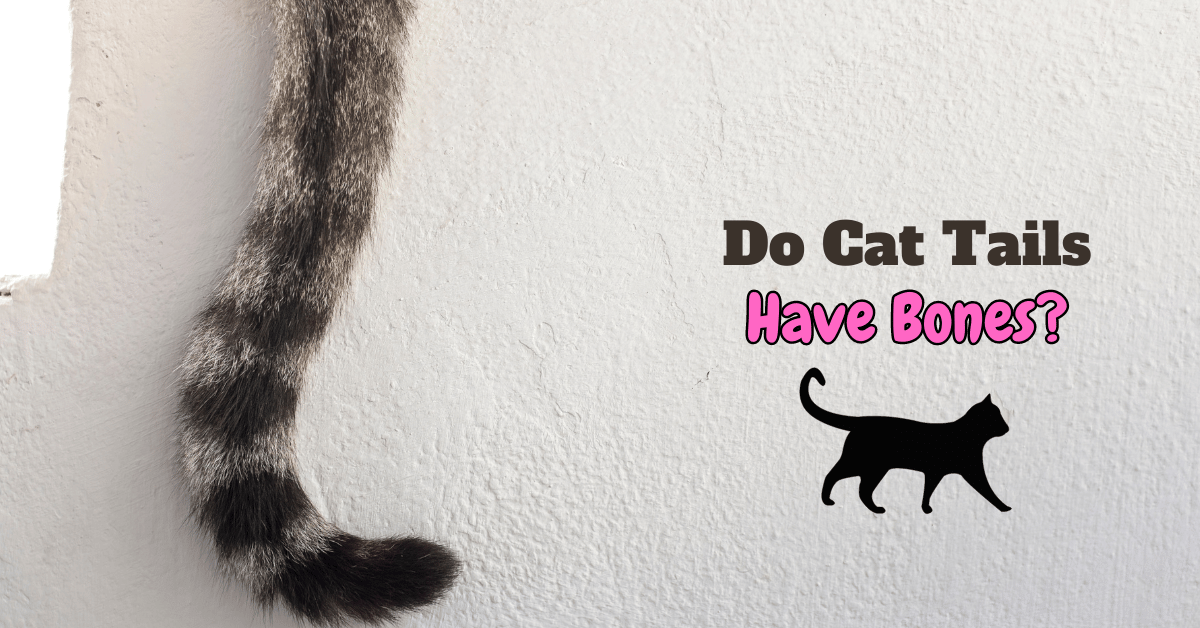Do Cat Tails Have Bones? A Detailed Look
Yes, cat tails have bones. A cat’s tail is an extension of its spine and is made up of a series of small bones called caudal vertebrae. These bones are connected by muscles, tendons, and ligaments, giving the tail its remarkable flexibility and movement.
How Many Bones Are in a Cat’s Tail?
The number of bones in a cat’s tail can vary depending on the breed. Long-tailed cats typically have between 19 to 23 caudal vertebrae, while short-tailed or tailless cats have fewer. The bones at the base of the tail are generally larger and taper in size towards the tip, contributing to the tail’s agility and finesse.

Why Do Cats Have Bones in Their Tails?
Cat tails are essential for several important functions:

1. Balance
The tail acts as a counterbalance, especially useful when a cat is navigating narrow surfaces, climbing trees, or making quick, agile movements during a jump.
2. Communication
Cats use their tails as a form of non-verbal communication. A twitching tail can indicate curiosity or excitement, while a puffed-up tail signals fear. The tail’s position can convey a wide range of emotions, from happiness to aggression.
3. Agility
The bones in a cat’s tail contribute to their incredible agility. The tail helps them make sharp turns while running or hunting, helping them to maintain their balance and not topple over during sudden changes in direction.
Can a Cat’s Tail Be Injured?
Yes, cat tails can be injured, especially in outdoor environments where hazards are more common. Common tail injuries include:
1. Fractures
The bones in a cat’s tail can break if the tail is caught in something, hit by a car, or subjected to a fall. This can be very painful and may require medical intervention.
2. Nerve Damage
If the tail is pulled too hard, it can damage the nerves, which may lead to loss of control over the cat’s bladder or bowel movements. Such injuries are serious and need immediate veterinary care.
3. Dislocations
Dislocations can occur when the tail is twisted or bent forcefully. This can affect the vertebrae and lead to pain and limited movement until treated.
If you suspect your cat has a tail injury, it’s important to consult a vet as soon as possible to minimize discomfort and prevent complications.
Can Cats Live Without Tails?
Yes, cats can live without tails, and some breeds, like the Manx, are naturally tailless due to genetic mutations. Cats that lose their tails later in life, perhaps due to injury or surgery, may experience some initial balance challenges but usually adapt quickly over time. A cat’s ability to live without a tail is a testament to their resilience and adaptability.
It’s important to note that pulling a cat’s tail can cause severe injury. Always handle cats gently to avoid hurting them or causing unnecessary stress.
The Anatomy of a Cat’s Tail and Its Importance
The anatomy of a cat’s tail plays a significant role in their day-to-day life. Comprising muscles, bones, nerves, and ligaments, the tail is an extension of the cat’s spine. It serves as both a tool for physical stability and an emotional barometer, offering insight into what a cat is feeling or thinking. This complex structure is crucial to a cat’s ability to climb, hunt, and interact with other animals or humans.
Fun Facts About Cat Tails
- Tail Language: A cat with a high, upright tail often feels confident or happy, while a low or tucked tail may signal insecurity or fear.
- Prehensile Ability: Unlike some animals, cats do not have prehensile tails, meaning they cannot use their tails to grasp objects. However, the tail is highly responsive and mobile.
- Individuality: Just as each cat has a unique personality, their tails also display individual behaviors and preferences, making tail-watching an interesting way to better understand your feline friend.
Conclusion: Do Cat Tails Have Bones?
In conclusion, yes, cat tails do have bones—specifically, a series of caudal vertebrae that help with balance, communication, and agility. The tail is a vital part of a cat’s anatomy, contributing to their graceful movements and expressive body language.
Understanding more about cat tails can help us better appreciate these fascinating companions and care for them appropriately, especially when it comes to preventing injuries and ensuring their well-being.
At Sweet Purrfections, we care deeply about the welfare of cats and other pets, and we encourage you to visit our other blog posts on feline welfare to learn more about keeping your furry friends happy and healthy.
Meet Sean, a fintech whiz with a penchant for pet purrs and blockchain buzz. After a decade of fintech feats, Sean’s tech talents leaped from ledger lines to litter lines, driven by a passion for pets and a vision for a more connected pet care community. With three critter companions as co-pilots, Sean launched this blog to share a treasury of pet-friendly tech tips and tales.


